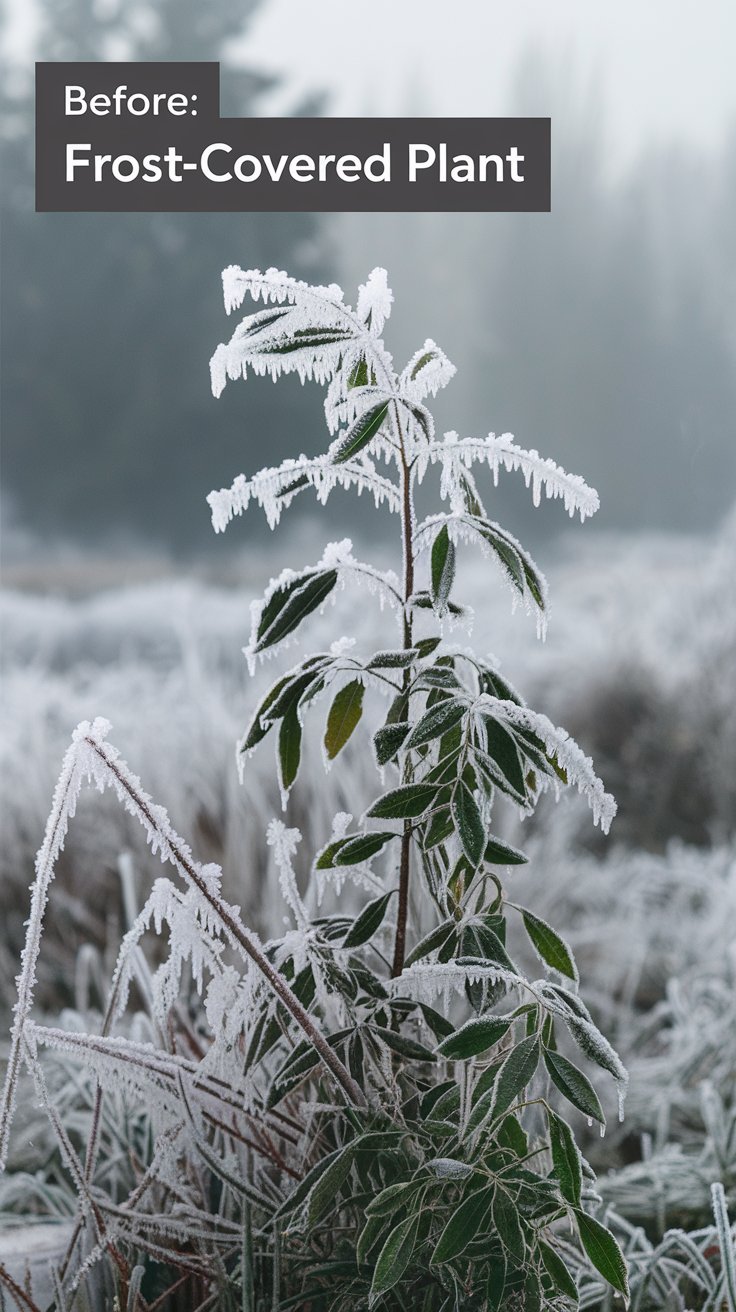Learn expert techniques to safeguard your garden from frost damage. Discover simple, effective methods to Protect Plants from a Freeze temperatures and extend your growing season.
To protect plants from a freeze, cover them with blankets, tarps, or specialized frost cloths before nightfall. Water plants thoroughly before the freeze, as moist soil retains heat better than dry soil. For potted plants, move them indoors or to a sheltered area. Use mulch to insulate plant roots, and consider using heat lamps or string lights to provide additional warmth.
As a horticulturist with over 20 years of experience in various climates, I’ve dealt with my fair share of unexpected frosts and freezes. In this comprehensive guide, I’ll share proven strategies to help you safeguard your garden from cold damage.
Understanding Freeze Damage

Before we dive into protection methods, it’s crucial to understand how freezing temperatures affect plants:
- Frost occurs when air temperatures drop below 32°F (0°C)
- Freeze damage happens when ice crystals form within plant cells, rupturing cell walls
- Different plants have varying levels of cold tolerance
Signs of Freeze Damage
Look out for these indicators after a frost event:
- Wilting or drooping leaves
- Darkened or water-soaked foliage
- Soft or mushy plant tissue
- Splitting bark on woody plants
Methods to Protect Plants from Freezing
1. Cover Your Plants
One of the most effective ways to protect plants is by covering them:
- Use blankets, sheets, tarps, or specialized frost cloths
- Apply covers before sunset to trap heat from the ground
- Ensure covers extend to the ground for maximum insulation
- Remove covers during the day to allow sunlight and prevent overheating
Pro Tip: Use stakes or hoops to keep covers from directly touching foliage, as this can cause cold transfer.
2. Water Plants Before the Freeze
Moist soil retains heat better than dry soil:
- Water plants thoroughly in the afternoon before an expected freeze
- Avoid overwatering, which can lead to root damage
- Focus on hydrating the root zone
3. Move Potted Plants
For container gardens:
- Bring potted plants indoors if possible
- Move containers to a sheltered area like a garage or against a building
- Group pots together to create a microclimate
4. Use Mulch for Insulation
Mulch acts as a natural insulator for plant roots:
- Apply a 2-3 inch layer of organic mulch around plants
- Use materials like straw, bark chips, or leaves
- For low-growing plants, you can completely cover them with mulch
5. Provide Additional Heat Sources
In extreme cases, additional heat can make a difference:
- Use outdoor-rated heat lamps or string lights
- Place heat sources under plant covers for maximum effect
- Be cautious with any electrical devices outdoors
6. Create Wind Breaks
Cold winds can exacerbate freeze damage:
- Use temporary fencing or burlap screens
- Plant evergreen shrubs or trees as permanent windbreaks
7. Avoid Pruning Before a Freeze
Pruning can stimulate new growth, which is more susceptible to cold:
- Delay pruning until after the last frost date in your area
- If you must prune, do so well before freezing temperatures are expected
Special Considerations for Different Plant Types
Vegetable Gardens
- Use row covers or cold frames for in-ground vegetables
- Consider season-extending techniques like hoop houses
Fruit Trees
- Wrap trunks with tree wrap or burlap
- Use string lights in the canopy for additional warmth
Tender Perennials
- Apply extra mulch around the base
- Consider digging up and storing tender bulbs indoors
After the Freeze: Recovery Tips
If your plants experience freeze damage:
- Wait to prune damaged areas until new growth appears in spring
- Provide extra care and water during the recovery period
- Apply a balanced fertilizer to support new growth
Protecting your plants from freezing temperatures requires planning and quick action. By implementing these strategies, you can minimize damage and extend your growing season. Remember, different plants have varying cold tolerances, so always research the specific needs of your garden’s inhabitants.
For more information on plant hardiness and frost dates in your area, consult the USDA Plant Hardiness Zone Map.
For more gardening tips and plant care guides, visit usagardenhub.com.



